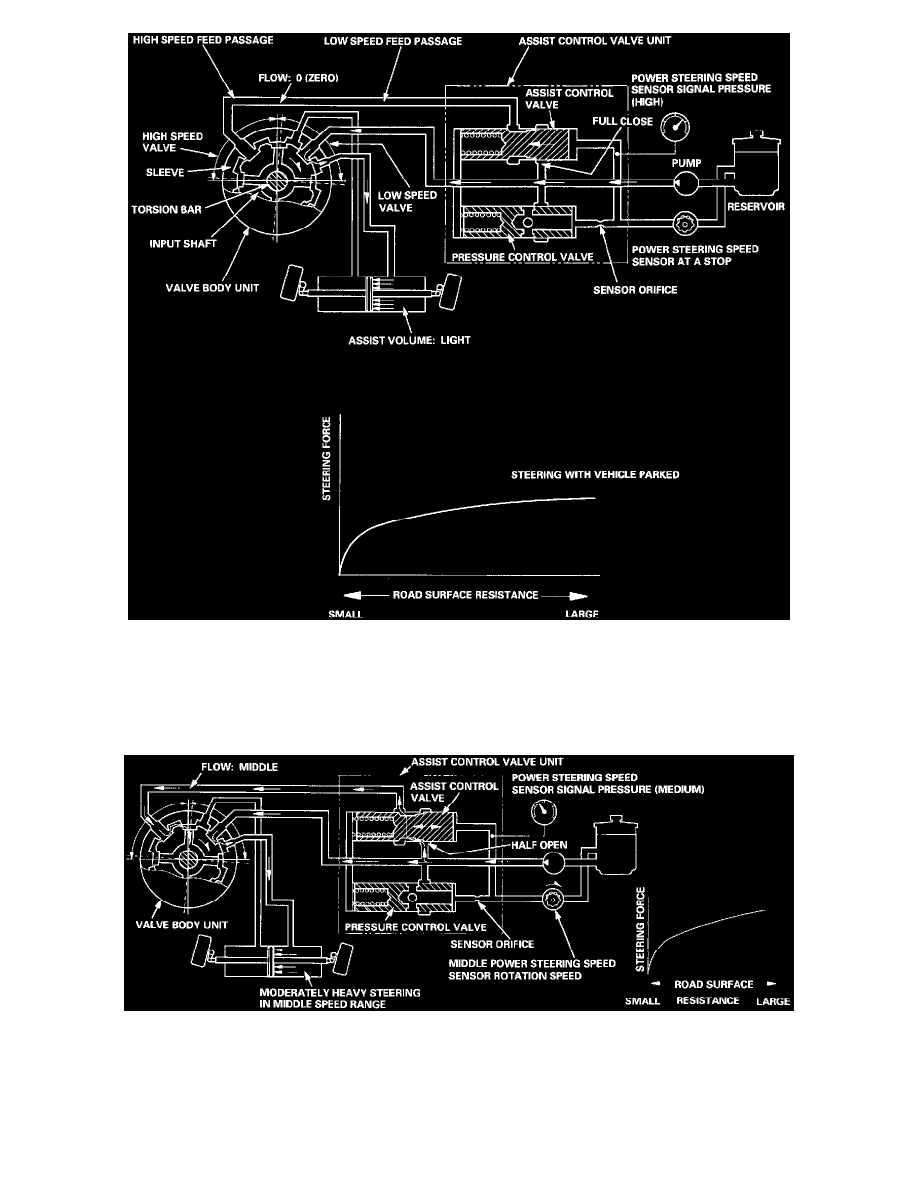TL L5-2451cc 2.5L SOHC MFI (1997)

When stopped:
When the vehicle is stopped with the engine idling, the fluid flow is shut off because the power steering speed sensor rotor is not rotating. The
standard pressure generated by the pressure control valve is applied to the assist control valve to move the valve to the left. When the assist control
valve is in this position, the orifice valve is closed. Therefore, the fluid discharged from the pump is fed to the low speed valve of the valve body unit.
Because the low speed valve has the small chamfer and thereby the small opening angle, the large hydraulic pressure (steering rack thrust) results in
the smallest steering force (high assist).
Middle Speed Range:
When the vehicle starts to move, the power steering speed sensor rotor starts to rotate as well, reducing the standard pressure and generating the power
steering speed sensor signal pressure. The valve returns to the right point where the pressure of the power steering speed sensor signal equals the
spring force of the assist control valve. When the assist control valve is in this position, the orifice of the valve slightly opens.
Therefore, the fluid pressure from the pump is applied to the high speed valve of the valve body unit. Because the high speed valve has a larger
chamfer and the compound opening area with the low speed valve is larger than that when the vehicle is stopped, the fluid pressure (steering rack
